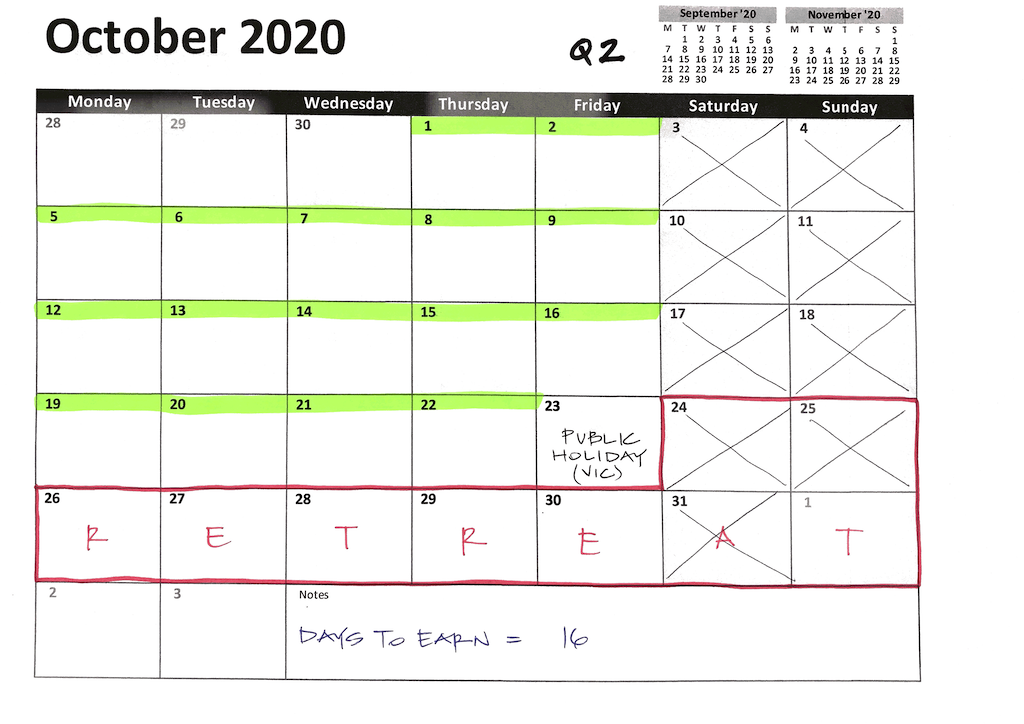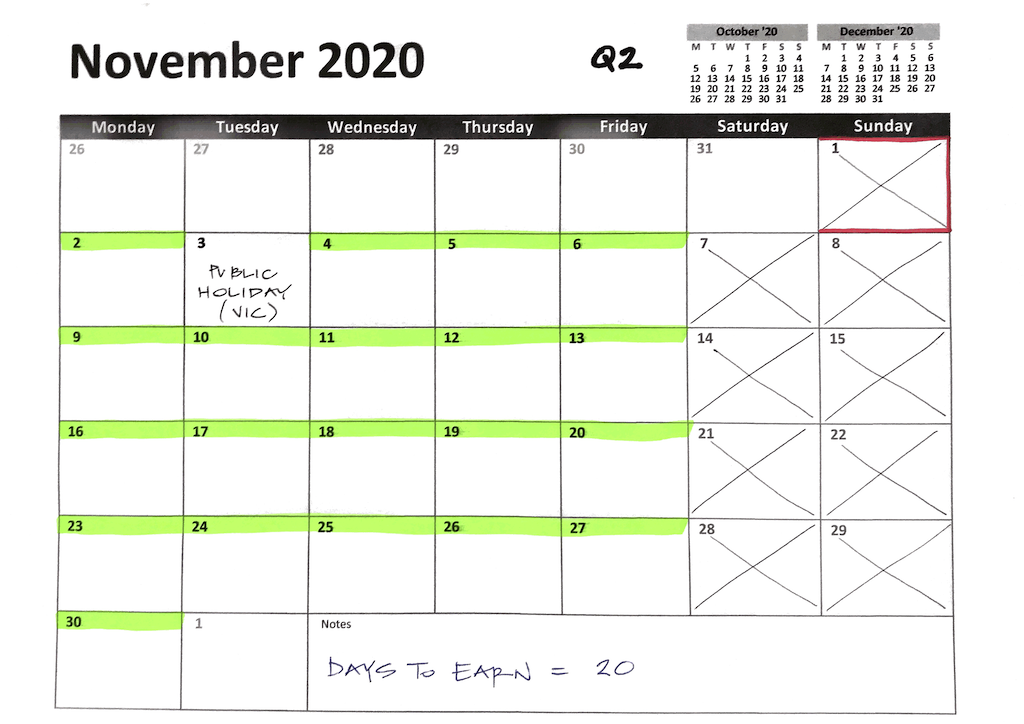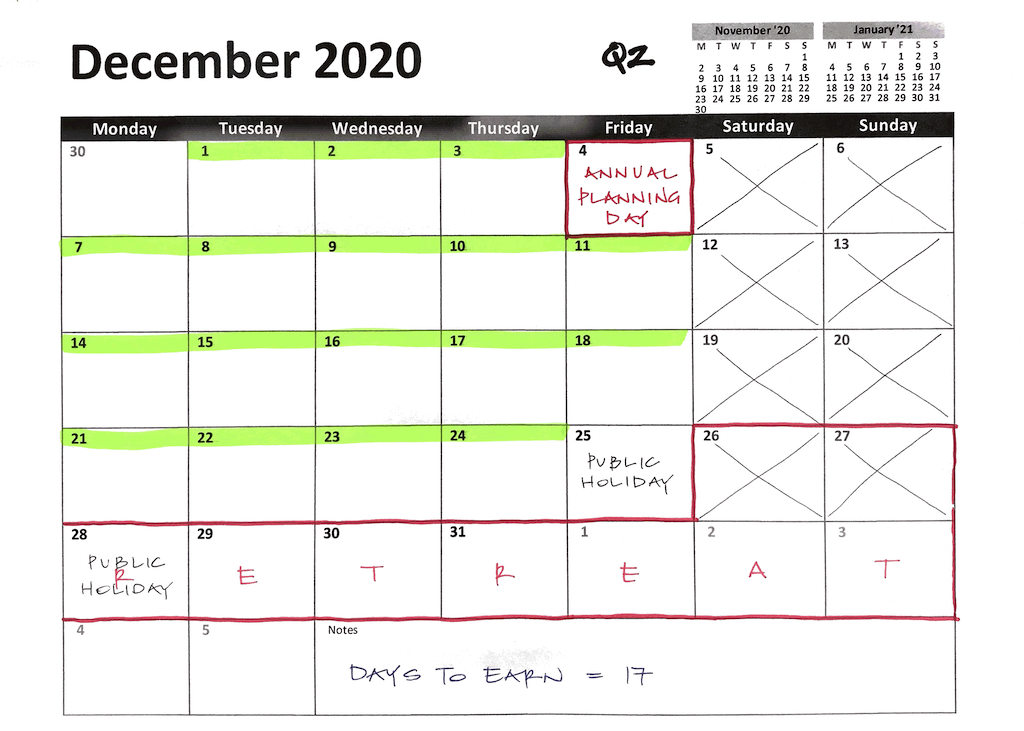Retreat Week – how it highlights the importance of managing my time as a sole trader.
Cass Ewing | Posted on |

I made a decision last week to implement what I’ve coined ‘Retreat Week’.
Retreat Week is not about massages, day-spas, champagne and manicures (well, not yet anyway).
It’s about scheduling a 9-day hiatus every 9 weeks where make myself completely unavailable; where I ‘retreat’ from being available as a sole trader.
That is, coincidentally, a lot of ‘nines’ huh?
I digress….
The concept is: 8-weeks on/available followed by 9 days (two weekends and 5 days in-between) off/unavailable.
It’s my opportunity to review and adjust the strategies I have in place to achieve my business goals, which in turn contribute directly to the goals I have for my life.
The inaugural Retreat Week begins this weekend, yipee!
Little less conversation a little more action
Making the decision to take every 9th week off was the easy part, and I admit I felt immediately lighter as a result.
But a decision is just a decision, and an announcement is just an announcement.
It’s all good-and-well to talk-it-up, but not much gets accomplished by through chit-chat alone.
Actions speak louder than words, right?
Implementing retreat week
So, on Sunday I stopped being romanced by the concept, and took steps to implement it.
I channelled my new-found energy into mapping out what Retreat Week was actually going to look like and how it would impact my time between now and the end of the 20-21 financial year (when I will re-evaluate my Retreat-Week-time-management-program once again).
Here’s what I did:
Step 1 – I printed nine blank monthly calendars for the months that remain in the 20-21 financial year (October 2020 through until June 2021).
Step 2 – I grouped the monthly calendar pages according to quarters:
- Q2: OCT – NOV – DEC.
- Q3: JAN – FEB – MAR
- Q4: APR – MAY – JUN.
Step 3 – I blocked out my first Retreat Week:
- Retreat Week 1/20-21: Saturday 24th October- Sunday 1st November.
Step 4 – I then blocked out every 9th week thereafter, thus scheduling another three occasions when I am unavailable between now and the end of the financial year:
- Retreat Week 2/20-21: Saturday 26th December – Sunday 3rd January. *
- Retreat Week 3/20-21: Saturday 27th February – Sunday 7th March. #
- Retreat Week 4/20-21: Saturday 1st May — Sunday 9th May.
* 2/20-21: obviously this overlaps with Christmas. I haven’t quite decided what I’m doing about Christmas yet, but as a general rule any time I do allocate to ‘holidays’ will be in addition to Retreat Week.
# 3/20-21: finishes on a long weekend, so that will end up being a 10-day hiatus. Nice!
Step 5 – To further highlight my ‘unavailability’ I blocked out every weekend and every public holiday too.
Step 6 – For each monthly calendar I then tallied how many Saturdays, Sundays, Public Holidays and Retreat Week days were allocated as ‘not available’.
The remaining number of days represented how many days were available to generate my income.
Step 7 – Here’s how the numbers stacked up:
Q2 | OCT – NOV – DEC:
- Total number of calendar days: 92 days
- Saturdays: 13
- Sundays: 13
- Public Holidays: 4
- Planning Day: 1
- Retreat Week days: 8
- Days remaining to generate income: 53.
Q3 | JAN – FEB – MAR:
- Total number of calendar days: 90
- Saturdays: 13
- Sundays: 13
- Public Holidays: 3
- Retreat Week days: 5
- Days remaining to generate income: 56.
Q4 | APR – MAY – JUN:
- Total number of calendar days: 91
- Saturdays: 13
- Sundays: 13
- Public Holidays: 3
- Planning Day: 1
- Retreat Week days: 5
- Days remaining to generate income: 56.
Here’s what OCT – NOV – DEC looks like on paper (which is now stuck up on my wall)



As a hyper-visual person, this ‘mapping’ blows my hair back because it’s the bigger picture I struggle to see on a digital calendar.
Looking at these pages on the wall really helped illuminate the time that is realistically available to me to accomplish what I want for my clients, for my business, and for my life.
The reality
I’m a reasonably disciplined person, but I can also procrastinate pretty readily like everyone else.
The reality is, if I’m going to stick to this program of managing my time for the next 9 months there are only 165 days ‘available’ to generate my income.
Importance of managing your time
When you start to look at your time like that you can quickly appreciate how imperative it is to use your time wisely and allocate the right amount of time to the right activities, and the right activities to the right days in the month.
That said, no one is perfect, and I’m sure I’ll trip up along the way, but this is my intention:
- Personal stuff gets done after hours, weekends and public holidays.
- Business development stuff will be scheduled for Retreat Week.
- Client project work will need to be done during those days I’ve identified as days-to-earn.
Interestingly, since I did this exercise on Sunday I’m already finding it easier to manage my time.
I now know where – on the bigger picture timetable – I need to schedule particular tasks and activities.
I’m not as stressed about having to get everything done right now because I’ve created the space to do them in the future.
Most importantly, I have made the time to work ON my business not just IN it.
I’ll admit, my list for Retreat Week is already chokkas, but the good thing is it means I’m not being distracted by those tasks now.
I’m far from perfect, and this is very much a work in progress, so I’ll let you know how I go!
Leave a Reply